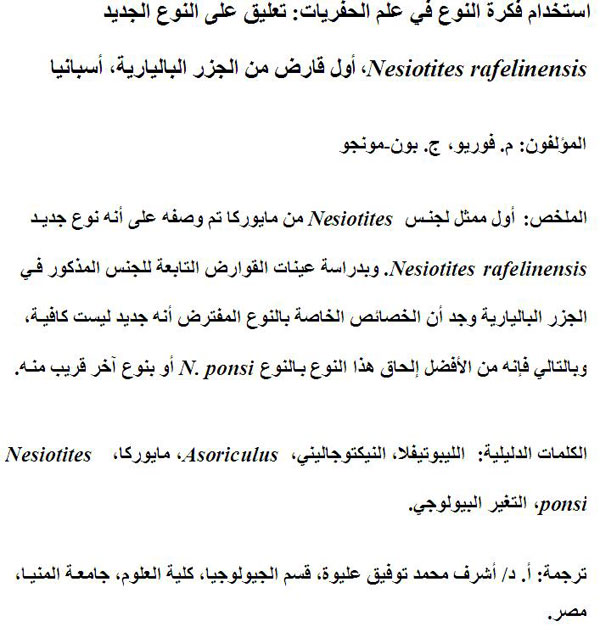The use of the species concept in paleontology. Comment on "Nesiotites rafelinensis sp. nov., the earliest shrew (Mammalia, Soricidae) from the Balearic Islands, Spain" by Rofes et al., 2012
Plain Language Abstract
Identifying a fossil species is not always an easy task. Individuals included in the same biological species are, by definition, different. Sometimes the boundaries between what is considered a peculiarity of an individual, of a species or of a genus can be somewhat arbitrary. In this work, we provide some examples of morphological variability within rather large fossil populations of shrew from the Balearic Islands (Spain) where only one species per site is present. The oldest record of a shrew in Mallorca hitherto was recently described as a new species based on just a single specimen. After our study, the most reasonable conclusion is that this fragment of mandible is probably not a new species to science but it actually belongs to a previously known species, Nesiotites ponsi.
Resumen en Español
El uso del concepto de especie en paleontología. Comentario sobre "Nesiotites rafelinensis sp. nov., la musaraña (Mammalia, Soricidae) más antigua de las Islas Baleares, España" por Rofes et al., 2012
El representante más antiguo de Nesiotites de Caló d'en Rafelino (Mallorca) ha sido descrito recientemente como una nueva especie (Nesiotites rafelinensis) sobre la base de una sola hemimandíbula con p4-m3. Una revisión en detalle de las extensas colecciones de diferentes especies de Nesiotites de las Islas Baleares pone de manifiesto la existencia de una amplia variación morfológica en estas musarañas del Plio-Pleistoceno. Seis de los siete caracteres diagnósticos de N. rafelinensis caen dentro del rango de variabilidad de N. ponsi, la especie más antigua previamente conocida. Concluimos, por tanto, que no existen caracteres que justifiquen suficientemente la definición de una nueva especie y que, en nuestra opinión, este material debería ser atribuido a N. ponsi o a alguna forma estrechamente relacionada (N. aff. ponsi / N. cf. ponsi).
Palabras clave: Lipotyphla; Nectogalini; Asoriculus; Mallorca; Nesiotites ponsi; variabilidad biológica
Traducción: Miguel Company
Résumé en Français
L'utilisation du concept d'espèce en paléontologie. Commentaire sur "Nesiotites rafelinensis sp. nov., the earliest shrew (Mammalia, Soricidae) from the Balearic Islands, Spain" par Rofes et al., 2012
Le plus ancien représentant de Nesiotites de Caló d'en Rafelino (Majorque) a été récemment décrit comme une nouvelle espèce (Nesiotites rafelinensis) sur la base d'une seule hémimandibule avec p4-m3. Une inspection minutieuse de grandes collections d'espèces différentes de Nesiotites provenant des îles de Baléares révèle une large variation morphologique intraspécifique chez les musaraignes plio-pléistocènes. Six des sept caractères diagnostiques de N. rafelinensis tombent dans la variabilité de l'espèce précédemment connue comme la plus ancienne, N. ponsi. Nous en concluons qu'aucun trait ne supporte suffisamment la définition d'une nouvelle espèce, et de notre point de vue ce matériel devrait être référé à N. ponsi ou à une forme proche (N. aff. ponsi / N. cf. ponsi).
Mots clés: Lipotyphla; Nectogalini; Asoriculus; Majorque; Nesiotites ponsi; variabilité biologique.
Translator: Olivier Maridet
Deutsche Zusammenfassung
Das Artenkonzept in der Paläontologie: Bemerkung zu "Nesiotites rafelinensis sp. nov., die früheste Spitzmaus (Mammalia, Soricidae) der Balearen, Spanien
Schlüsselwörter: Lipotyphla; Nectogalini; Asoriculus; Mallorca; Nesiotites ponsi; biologische Variabilität
Translator: Eva Gebauer
Arabic

Translator: Ashraf M.T. Elewa

